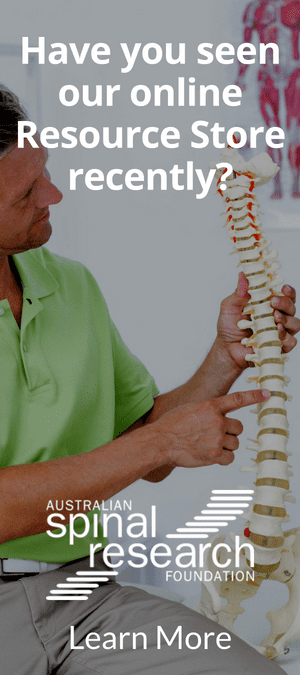Over the last decade, we have witnessed the emergence of research indicating that chiropractic care can have an influence on the way the brain drives muscles. Among those were studies showing changes in the H-reflex and V-waves following chiropractic care, as well as studies showing changes to cortical drive to upper and lower limbs. Such research is slowly but surely painting a picture of the neural plastic changes that can occur under care, and allowing us to move the conversation away from lower back pain and musculoskeletal issues alone.
The latest issue to attract the microscope of Dr Heidi Haavik and her team is that of bite force. This study, a two-arm randomized parallel group study, had a simple design. Researchers divided the 28 participants into two groups, offered one a chiropractic adjustment and another a sham intervention, and measured the difference in bite force. It was done in a country where there is low awareness of chiropractic, such that 11 of the 14 sham-intervention recipients believed they had received the chiropractic adjustment. Bite force was measured before and after the interventions in both groups, and measured again a week after the intervention.
They were careful to make sure that all teeth contributed to the bite force measure, and that there was low risk of dental damage. The results were quite enlightening:
“Immediately post-intervention there was a significant INTERVENTION × TIME interaction for the maximum bite force measurements (F (1,26) = 5.96, p = 0.02). Post hoc analysis revealed a significant increase in bite force in the chiropractic group of 11.0% (±18.6%) post-intervention (p = 0.04). Immediately after the sham intervention bite force in the control group decreased by 2.3% (±9.0%, p = 0.20).At the 1 week follow up assessment the interactive effect remained (F (1,10) = 10.92, p < 0.01) with bite force in the chiropractic group remaining 13.0% (±12.9%, p = 0.04) stronger than baseline. In the control group bite force decreased by 6.3% (±3.4%, p = 0.01) at the 1-week follow-up [1].”
The study’s authors noted that only six participants from each group were available for the post-intervention measurement one week later. Still, the comparison to results from the control group paints a very clear picture – chiropractic care can increase maximal bite force.
This leads us to the next logical question: why? It may seem like a highly specific study, examining only bite force, but it contributes to a broader understanding of the impact of chiropractic care on muscle control. So far, the NZCC’s apparent quest to understand the mechanisms behind chiropractic seems to be offering up evidence that chiropractic care creates neural plastic changes at the level of the brain rather than the spinal cord. The cortical drive study and the H-reflex/V-waves study [2, 3, 4] certainly indicated this, as did work on sensorimotor integration [5]. This was also echoed in a 2016 study that showed changes in sensorimotor integration in the prefrontal cortex after chiropractic care [6].
Previous studies have also highlighted that “by altering the sensory input this can alter jaw muscle activity [1].” Other research has shown that “jaw function is often coupled with neck muscle activation [1].” Scientifically speaking, the ducks are all lining up when it comes to chiropractic care changing the structure and function of the brain, and altering the way the body interacts with the brain.
That said, this is the first study that has shown a single session of chiropractic spinal manipulation can increase jaw bite force in comparison to the sham. It also adds to the understanding around the subclinical neck pain phenomena by indicating a link between cervical spine function and maximal bite force with authors commenting that, “cervical spine dysfunction or cervical spinal manipulation of dysfunctional segments may also impact jaw muscle motor control [1].”
So far, evidence around subclinical neck pain shows a plethora of effects beyond pain alone. It can affect proprioception, cortical and cerebellar motor processing and mental response times [7]. Now we see that dysfunction in the cervical spine can also affect bite force.
While the cervical spine featured heavily in the discussion on this latest piece of research, it should be noted that the chiropractic intervention included full spine adjusting (plus sacroiliac joints).
This piece of research adds to a fascinating line of investigation that is adding more and more certainty to what chiropractors have long known – the power of chiropractic reaches far beyond musculoskeletal complaints. We work better when our brain and body communicate well.
Make sure you check out the full research paper (reference provided below).
References
[1] Haavik H, Ozyurt M, Niazi I, Holt K, Nedergaard R, Yilmaz G, Turker K (2018), “Chiropractic Manipulation Increases Maximal Bite Force in Healthy Individuals,” Brian Sciences, 2018, 8, 76; doi:10.3390/brainsci8050076
[2] Haavik, H.; Niazi, I.K.; Jochumsen, M.; Sherwin, D.; Flavel, S.; Türker, K.S. Impact of spinal manipulation on cortical drive to upper and lower limb muscles. Brain Sci. 2017, 7, 2
[3] Christiansen, T.; Niazi, I.; Holt, K.; Nederggard, R.; Duehr, J.; Schlupp, V.; Marshal, P.; Türker, K.S.; Hartvigsen, J.; Haavik, H. The effects of a single session of spinal manipulation on strength and cortical drive in athletes
[4] Niazi, I.; Türker, K.S.; Flavel, S.; Kinget, M.; Duehr, J.; Haavik, H. Changes in h-reflex and v waves following spinal manipulation. Exp. Brain Res. 2015, 233, 1165–1173.
[5] Haavik H, Murphy B (2007), “Cervical spine manipulation alters sensorimotor integration: a somatosensory evoked potential study,” Clin Neurophysiol. 2007 Feb:118(2):391-402 https://www.ncbi.nlm.nih.gov/pubmed/17137836 Retrieved 8 May 2018
[6] Lelic D, Niazi IK, Holt K, Jochumsen M, Dremstrup K, Yielder P, Murphy B, Drewes AM, Haavik H (2016), “Manipulation of Dysfunctional Spinal Joints Affects Sensorimotor Integration in the Prefrontal Cortex: A Brain Source Localization Study,” Neural Plast. 2016; 2016:3704964. doi: 10.1155/2016/3704964, https://www.ncbi.nlm.nih.gov/pubmed/27047694 retrieved 8 May 2018
[7] Staff Writer, 2018 “Neck Pain, Cerebellar Processing and the Power of Chiropractic,” Australian Spinal Research Foundation (blog) https://spinalresearch.com.au/neck-pain-cerebellar-processing-power-chiropractic-care/









